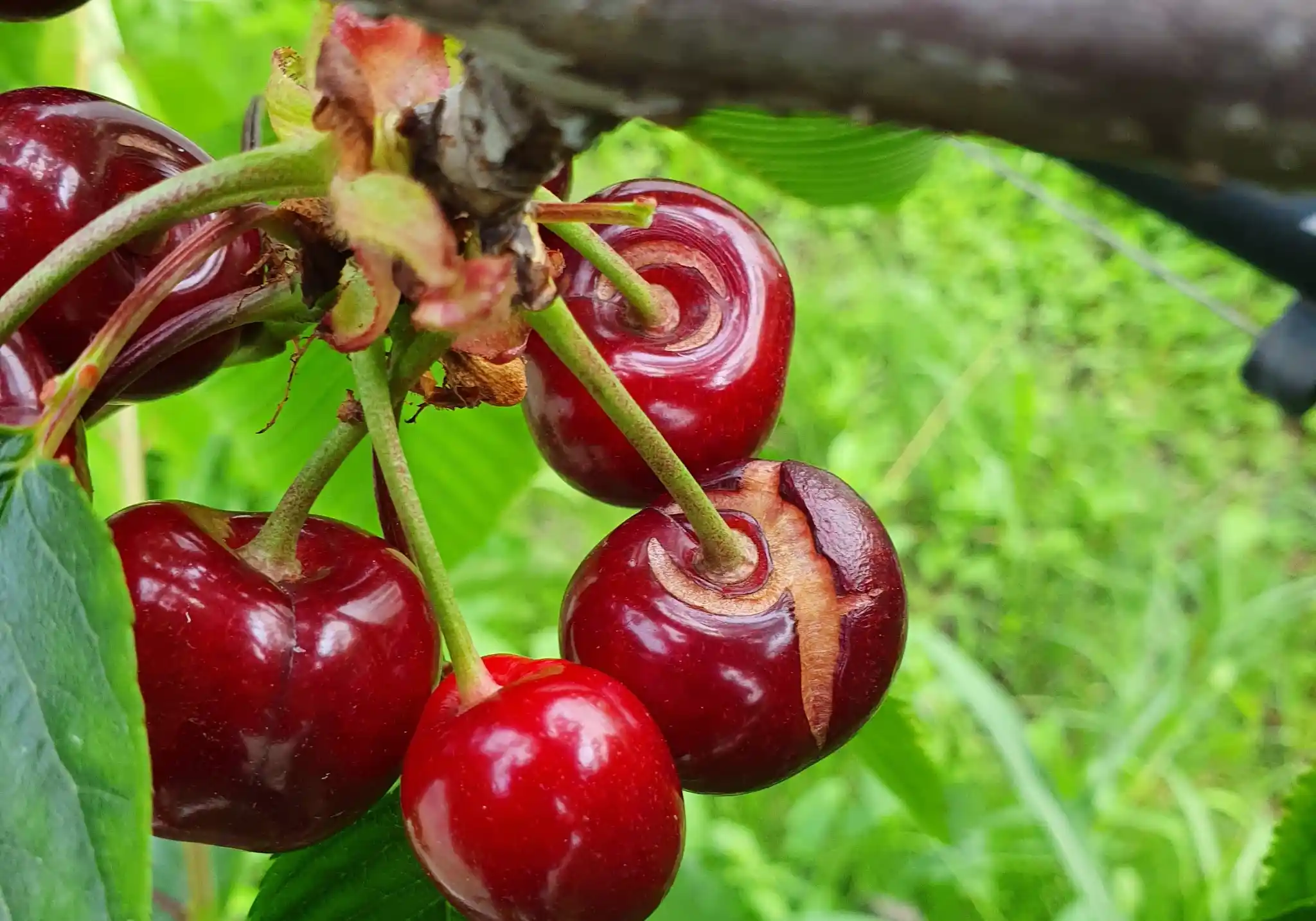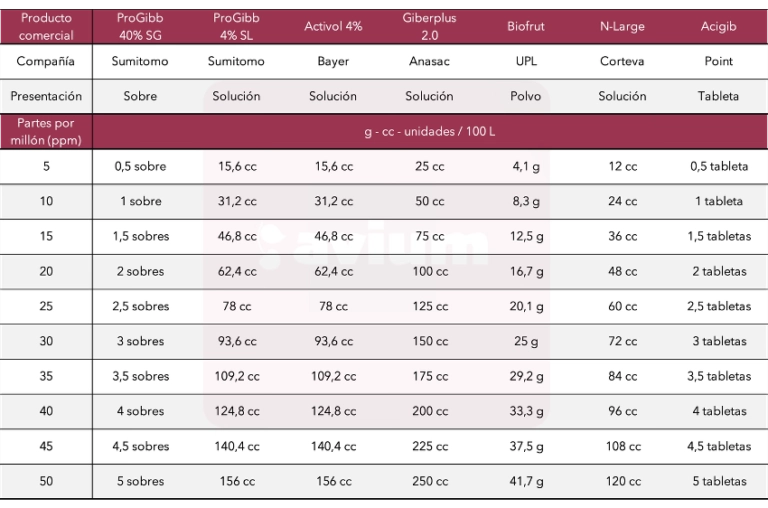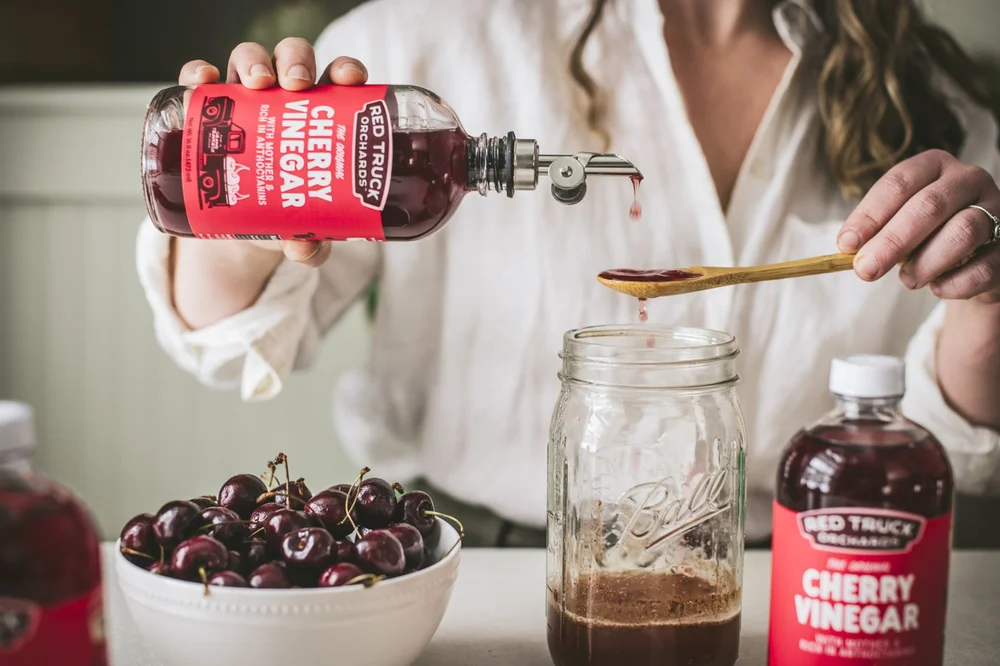The ideal moment to apply gibberellic acid in cherry trees is at the beginning of stage 3 of cell elongation. The start of stage 3 can be identified by the fruit color shift from green to yellow, commonly referred to as straw color, which in practice coincides with the beginning of veraison.

Fruit size is undoubtedly one of the most important attributes in cherry production: quality and size are essential for export, as growers’ and exporters’ economic returns depend on these and other combined factors. Each season represents a constant challenge: producing high-quality, well-conditioned fruit means obtaining cherries that are attractive, firm, with hydrated stems, damage-free and of good size.
The continuous increase in cherry production, which reached over 125 million 5 kg boxes (around 626,000 tons) during the 2024–2025 season, further highlights the importance of quality and the maintenance of this attribute throughout the entire supply chain. From a commercial perspective, despite the complexity of the 2024–2025 season, calibers ≥2J still make the difference.
Agronomic management and growth regulators
A series of agronomic practices can be implemented in an integrated manner, including proper adherence to nutritional programs, adequate irrigation management, and thinning, among other techniques, to improve the leaf-to-fruit ratio and consequently cherry quality.
This balance can be further enhanced with the use of growth regulators, compounds that act as modulators of phytohormones and that, when applied at key moments of fruit development, can influence processes directly related to fruit size, such as cell division and elongation.
Gibberellins
Phytohormones are divided into nine main classes: auxins, gibberellins, cytokinins, ethylene, abscisic acid, brassinosteroids, jasmonates and strigolactones, the latter recognized since 2012.
This article discusses the use of gibberellic acid or gibberellins (GA₃) in cherry production, focusing on the moment of application, dosage and the main physiological effects on fruit development.
Gibberellins were discovered while studying the ascomycete fungus Gibberella fujikuroi, the causal agent of “bakanae” or abnormal elongation in rice. These substances are diterpenoid acids identified with the acronym GA (gibberellic acid), followed by a number indicating the order in which they were discovered and characterized.
Among those with the highest biological activity are GA₁, GA₃, GA₄, GA₅, GA₆ and GA₇, while the remaining ones act as precursors.
Gibberellic acid is one of the most studied phytohormones in plant physiology, as it participates in processes such as cell division and elongation, shoot and fruit growth, internode elongation, promotion of flowering in some annual species, inhibition of flower induction in many perennial species, and stimulation of germination.
More than 100 gibberellins are currently known, but only a few possess significant biological activity. In cherry production, GA₃ is the most widely used, with objectives related to shoot growth and increased fruit elongation in the final stage of development.
How gibberellic acid increases fruit size
Gibberellic acid acts at the cellular level by stimulating plasma membrane proton pumps (H⁺-ATPases), which push protons (H⁺) into the cell wall, lowering its pH and creating an acidic environment.
This activates proteins known as “expansins”, which break the bonds between cellulose molecules, making the walls more elastic. The subsequent influx of water allows cell expansion and thus an increase in fruit size.
Fruit growth depends on the accumulation of dry matter and water, determined and limited by the leaf-to-fruit ratio and the availability of metabolites in the plant. The fruit’s ability to attract photoassimilates is a dominant factor in resource competition and is determined mainly by the quality and number of flowers produced on the tree (Guardiola, 1997).

Research and practical applications
Whiting & Lang (2021) demonstrated that in the Sweetheart and Lapins cultivars, applications of GA₃ at concentrations between 20 and 40 ppm significantly increase fruit diameter and weight, shifting the distribution toward larger calibers.
In Chile, several studies have described the effects of gibberellic acid on cherry quality and condition. Carrión-Antolí and Zoffoli (2024) showed that this application influences the modulus of elasticity and resistance to postharvest mechanical damage.
They also demonstrated that GA₃ application significantly increases fruit growth rate from stage 3 onwards compared to controls, resulting in larger final fruit at harvest.
The R&D team at Avium, together with Chilean growers, has conducted numerous trials demonstrating the significant effect of GA₃ as a supplement to cherry nutritional programs.
These studies showed improvements in soluble solids, dry matter and firmness (Durofel), and especially in fruit size, with parameters positively influenced by exogenous GA₃ applications (Tapia, 2015).
Furthermore, the effect of complementary GA₃ applications has shown a clear positive impact on fruit size and average fruit weight, as well as a marked shift in cherry size distribution toward more commercially appealing calibers (Tables 1 and 2).
 Table 1. Effects of GA3 application on diameter and weight of Lapins fruits (Avium, 2015).
Table 1. Effects of GA3 application on diameter and weight of Lapins fruits (Avium, 2015).
 Table 2. Effects of GA3 application on size distribution of cv. Lapins cherries (Avium, 2015).
Table 2. Effects of GA3 application on size distribution of cv. Lapins cherries (Avium, 2015).
When and how much GA3 should be applied?
The optimal moment for applying gibberellic acid is the beginning of stage 3 of growth, recognizable by the shift in fruit color from green to straw yellow. In practice, this moment coincides with the onset of veraison.
Since correctly identifying the phenological stage is complex, it is recommended to apply it at the beginning of veraison, when 5–10% of the fruit shows pinkish or reddish tones, to avoid errors.

The exogenous use of GA₃ at this stage is directly related to final fruit size. However, it is often incorrectly believed that GA₃ also increases firmness. In reality, gibberellic acid, besides promoting cell elongation and fruit growth, has little effect on dry matter content.
Regarding concentrations/dosage, Avium research has established a direct relationship between GA₃ concentration and fruit size up to around 40 ppm. Beyond this threshold, increasing the concentration does not produce significant effects.
The variation in concentration depends on several factors:
1. Balanced crop load (> 6,000 / < 15,000 kg/ha): average concentration between 20 and 30 ppm.
2. Light crop load (< 5,000–6,000 kg/ha): around 10 ppm.
3. High crop load (> 15,000 kg/ha): around 40 ppm.
Cultivars more susceptible to cracking
This aspect represents an important factor in choosing the correct concentration. For cultivars more sensitive to cracking, caution is required when using GA₃: the concentration should not exceed 20–25 ppm.
In these cases, cracking is generally not caused by rain, but by standing water, dense fog, drizzle or condensation in more humid areas.

Undoubtedly, the benefits of applying this type of phytohormone are numerous; however, it is worth remembering that it can interfere with fruit color development.
This is not a true “color delay”, but in earlier cultivars — aiming for harvest before November 20–25 — excessive use of GA₃ is not recommended.
In such cases, a concentration of 20–25 ppm is recommended, applied only once at the optimal moment.
Given the wide range of GA₃ commercial formulations available in Chile, differing in concentration, formulation and format, Avium has developed a reference table showing the correspondence between active ingredient ppm and grams or cc per 100 L of commercial product.
 Table 3. Relationship between GA3 active ingredient concentration (ppm) and the concentration (g or cc/100 L) of commercial product available in Chile.
Table 3. Relationship between GA3 active ingredient concentration (ppm) and the concentration (g or cc/100 L) of commercial product available in Chile.
Is GA₃ recommended in all cases?
Yes. GA₃ application shows positive effects in every situation, even in orchards with yields between 2,000 and 3,000 kg per hectare, provided the treatment uniformly reaches all fruit (as it acts by contact).
In these cases, the minimum recommended concentration is 10 ppm. Furthermore, exogenous application of phytohormones can help restore metabolic activities to normal levels.
GA₃, at certain concentrations, has proven beneficial for the physiology and metabolism of many plants under abiotic stress, as it regulates metabolic processes through antioxidant and sugar-related enzymes.
Undesirable effects and recommendations
Among the adverse effects linked to the use of gibberellic acid, it should be noted that — according to several studies conducted by Avium in recent seasons — when concentrations above 30–35 ppm are used (in specific cases), deterioration of the stem can occur.
In these situations, it is recommended to combine GA₃ with a plant extract, such as seaweed extract. This helps mitigate the pronounced effect of gibberellic acid on the elongation of stem tissue cells.
This combination prevents the rupture and subsequent dehydration of these cells. Therefore, GA₃ applications above 25–30 ppm should always be accompanied by a plant extract.
Operational conclusions
It is essential to define the optimal concentration for each production context and ensure homogeneous distribution of the product over the entire plant and all fruits, so that the treatment directly aligns with the main objective: increasing fruit size.
As a practical rule, there is no need to worry when the fruit begins changing color from green to yellow: it is always better to wait for the appearance of the first pink fruits and then apply the most suitable concentration based on production goals.
AUTHORS
David González Ortiz, Irrigation, Climate and Technology Department – Avium;
Ricardo Rojas García, Technical consultant for growers – Avium;
Catalina Lazcani Torres, Agronomic manager – CERIMA Cherries.
Source: Smartcherry World
Opening and internal photos: SL Fruit Service
Cherry Times – All rights reserved



















